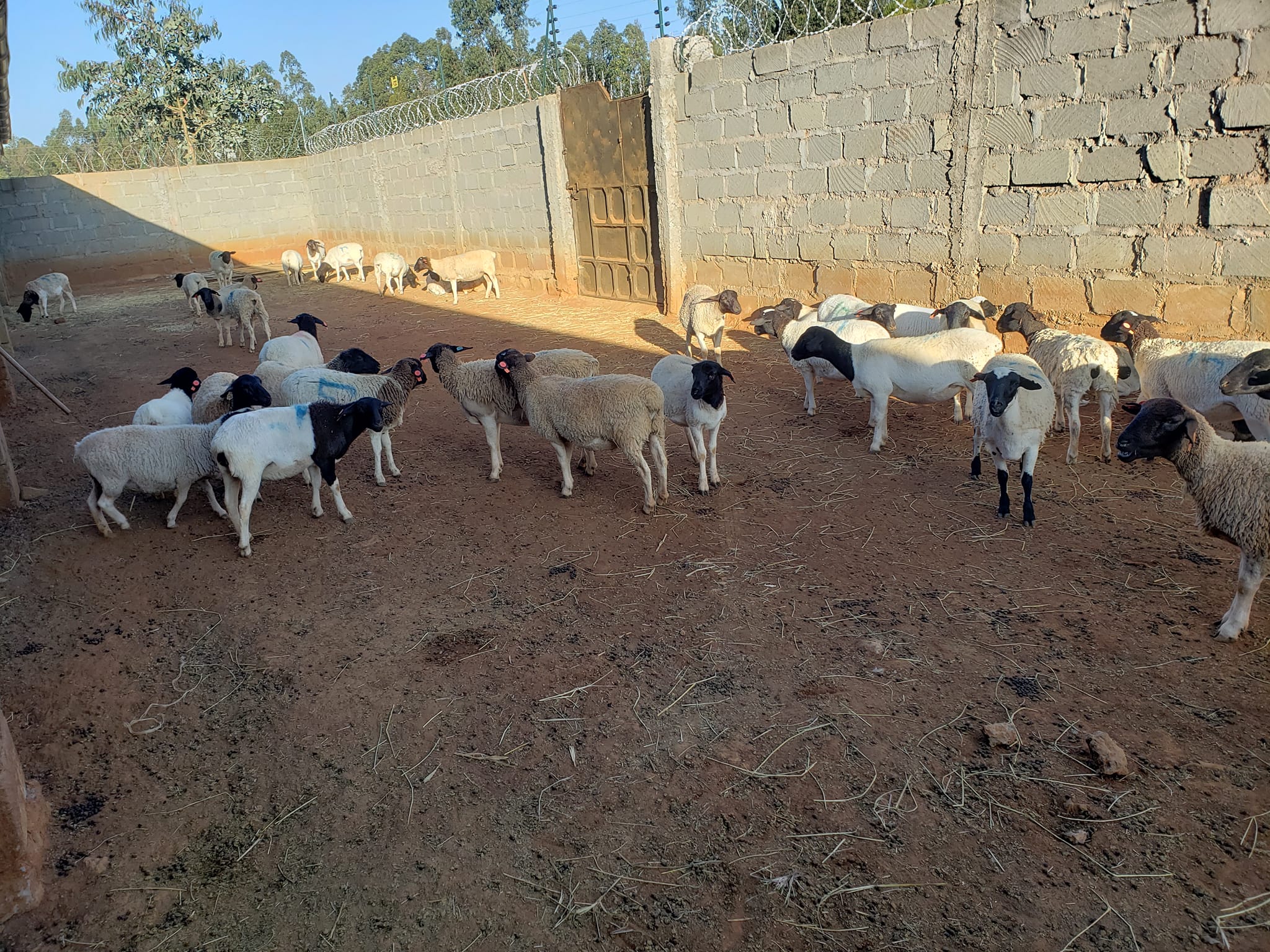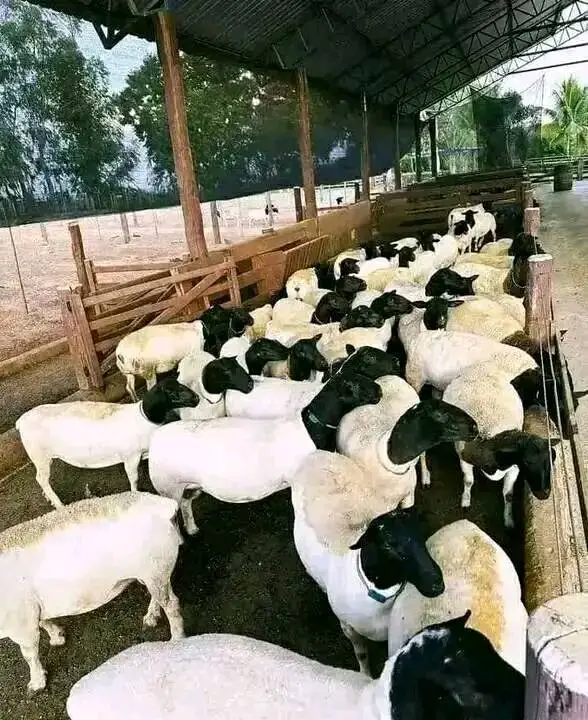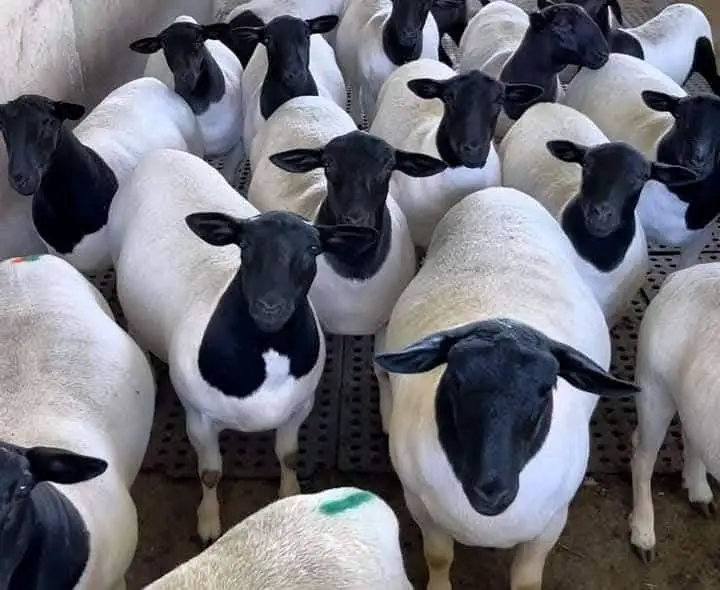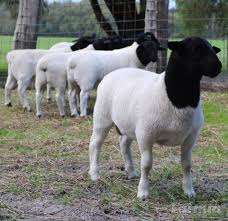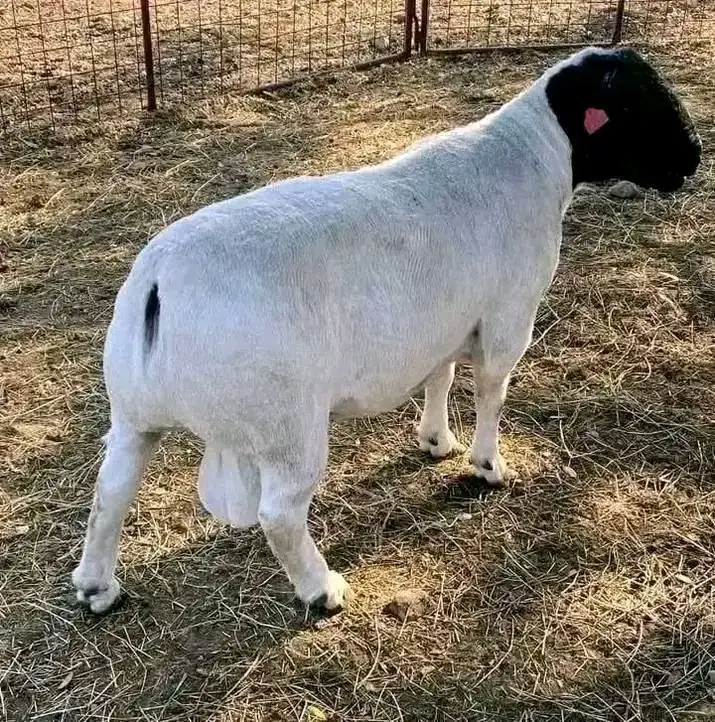Dorper Sheep Farming in Zero Grazing
Dorper sheep, celebrated for their rapid growth and adaptability, are increasingly reared in zero-grazing systems across Kenya. This intensive method, where sheep are confined and fed indoors, is ideal for small landholders, urban farmers, or regions with limited pasture.
While zero grazing demands careful management, it offers higher control over nutrition, health, and productivity.
This guide explores how to successfully raise Dorper sheep in a zero-grazing setup, covering housing, feeding, health, and profitability.

1. What Is Zero Grazing?
Zero grazing involves keeping livestock in enclosed structures where all feed and water are provided. Unlike free-range systems, sheep do not graze outdoors. This method is particularly suited to:
- High-density urban or peri-urban areas.
- Regions with poor pasture quality or frequent droughts.
- Farmers aiming for intensive meat production.
2. Why Choose Dorper Sheep for Zero Grazing?
- Low Space Requirements: Dorpers thrive in confinement due to their calm temperament.
- Efficient Feed Conversion: Convert 3–4 kg of feed into 1 kg of weight gain.
- High Fertility: Ewes adapt well to controlled breeding cycles.
- Disease Control: Reduced exposure to parasites like liver flukes.
3. Setting Up a Zero-Grazing Unit
A. Housing Design
A well-designed shed ensures hygiene, comfort, and productivity:
- Space: Allow 1.5–2 sqm per adult sheep; lambs need 0.5–1 sqm.
- Flooring: Elevated slatted floors (wood or concrete) for waste drainage.
- Ventilation: Install windows or vents to prevent respiratory issues.
- Feeding Troughs: 30–50 cm per sheep to avoid competition.
- Water Points: Automatic nipple drinkers or buckets refilled daily.
Cost Estimate for a 20-Sheep Unit:
- Construction: KES 80,000–150,000 (wooden structure with iron sheets).
- Equipment: KES 20,000–40,000 (troughs, water systems).
B. Waste Management
- Manure Collection: Clean floors daily; store manure in compost pits.
- Composting: Sell organic fertilizer at KES 500–1,000 per sack.
4. Feeding Management in Zero Grazing
Dorpers require a balanced diet since they cannot forage.
A. Daily Feed Requirements
| Sheep Category | Hay (kg) | Concentrates (kg) | Vegetables (kg) | Minerals (g) |
|---|---|---|---|---|
| Adult Ewes/Rams | 2–3 | 0.3–0.5 | 1–2 | 30–50 |
| Lactating Ewes | 3–4 | 0.6–1.0 | 2–3 | 50–70 |
| Lambs (0–6 months) | 1–2 | 0.2–0.4 | 0.5–1 | 20–30 |
B. Feed Sources
- Roughage:
- Hay: Rhodes grass, lucerne, or maize stover (KES 10–20/kg).
- Silage: Fermented maize or sorghum (KES 15–30/kg).
- Concentrates:
- Homemade mix: 50% maize germ, 30% sunflower cake, 20% wheat bran (KES 40–60/kg).
- Vegetables:
- Cabbage, sweet potato vines, or market waste (free/low-cost).
C. Sample Feeding Schedule
- Morning: 2 kg hay + 0.5 kg concentrates.
- Afternoon: 1 kg chopped vegetables.
- Evening: 1.5 kg hay + 0.3 kg concentrates.

5. Health Management
Zero-grazing reduces parasite risks but requires strict hygiene:
A. Vaccination Schedule
| Disease | Vaccine | Frequency | Cost (KES/Sheep) |
|---|---|---|---|
| Anthrax | Anthrax spore vaccine | Annual | 150–200 |
| Sheep Pox | Live attenuated | Annual | 200–300 |
| Enterotoxemia | Clostridium vaccine | Bi-annual | 100–150 |
B. Common Health Issues
- Respiratory Infections: Prevent with ventilation and dust-free feed.
- Hoof Rot: Trim hooves monthly; use copper sulfate foot baths.
- Mastitis: Check lactating ewes for swollen udders; treat with antibiotics.
C. Deworming
- Use albendazole or ivermectin every 3 months (KES 50–100/dose).
6. Breeding & Lambing in Confinement
- Heat Detection: Ewes cycle every 17 days; use a teaser ram for accuracy.
- Lambing Pens: Provide 2x2m private pens for pregnant ewes.
- Lamb Care: Ensure lambs suckle colostrum within 2 hours; supplement with milk replacer if needed.
7. Economic Analysis (20 Ewes)
A. Initial Costs
| Item | Cost (KES) |
|---|---|
| Housing & Equipment | 120,000 |
| Breeding Stock (20 ewes + 1 ram) | 400,000 |
| Feed (1 month) | 30,000 |
| Total | 550,000 |
B. Annual Operating Costs
| Item | Cost (KES) |
|---|---|
| Feed (hay, concentrates) | 300,000 |
| Healthcare | 25,000 |
| Labor | 120,000 |
| Total | 445,000 |
C. Revenue
- Meat Sales: 40 lambs/year at 35 kg (KES 300/kg) = KES 420,000.
- Manure Sales: 100 sacks/year = KES 50,000.
- Total Revenue: KES 470,000.
Net Profit: KES 470,000 – KES 445,000 = KES 25,000 (Year 1).
Profit increases in subsequent years as initial costs reduce.
8. Challenges & Solutions
| Challenge | Solution |
|---|---|
| High feed costs | Grow hydroponic fodder or sweet potato vines. |
| Manure odor/flies | Compost with sawdust; sell fertilizer. |
| Limited space for lambs | Use vertical stacking pens. |
9. Success Tips
- Start Small: Begin with 5–10 sheep to refine management.
- Record-Keeping: Track feed intake, breeding dates, and health treatments.
- Consult Experts: Partner with vets or KALRO for technical advice.
10. Case Study: Urban Farmer in Kiambu
Jane Mwangi, a farmer in Kiambu, keeps 15 Dorper ewes in a 20×30 ft shed. By using kitchen waste and homemade concentrates, she slashed feed costs by 40%. Her flock produces 25 lambs annually, earning KES 375,000.
Final Note: Zero-grazing Dorper farming is viable for Kenyan farmers with limited land. While initial costs are high, strategic feeding and health practices ensure steady returns. By leveraging vertical farming for fodder and tapping into urban meat markets, this system can transform small spaces into profitable agribusinesses.
